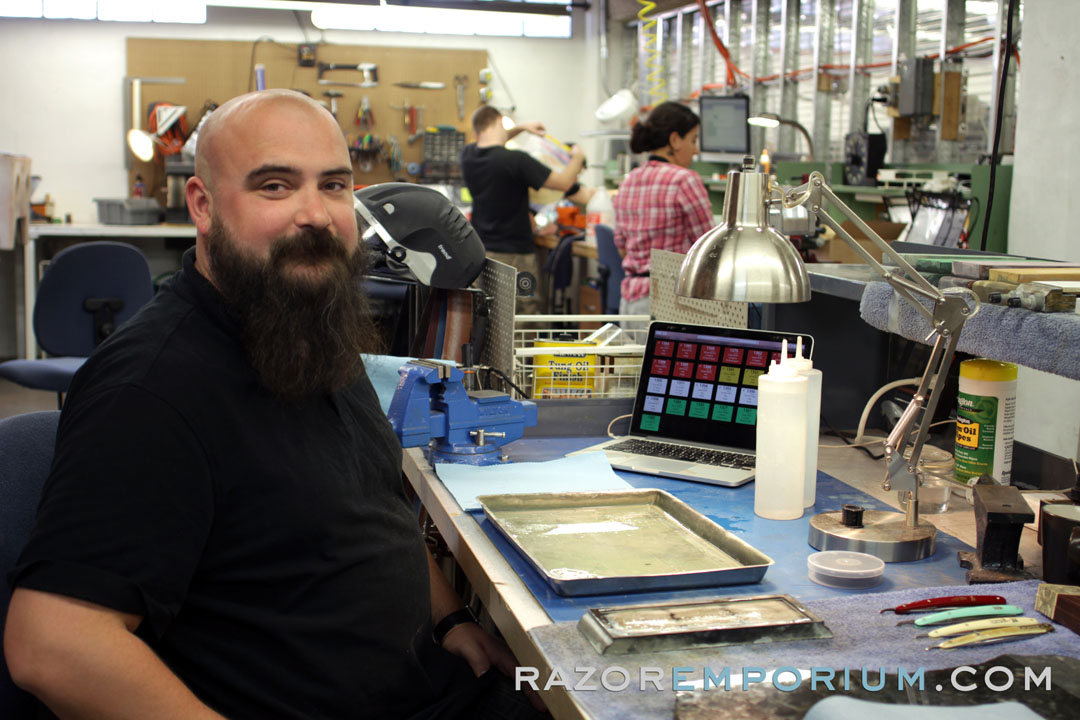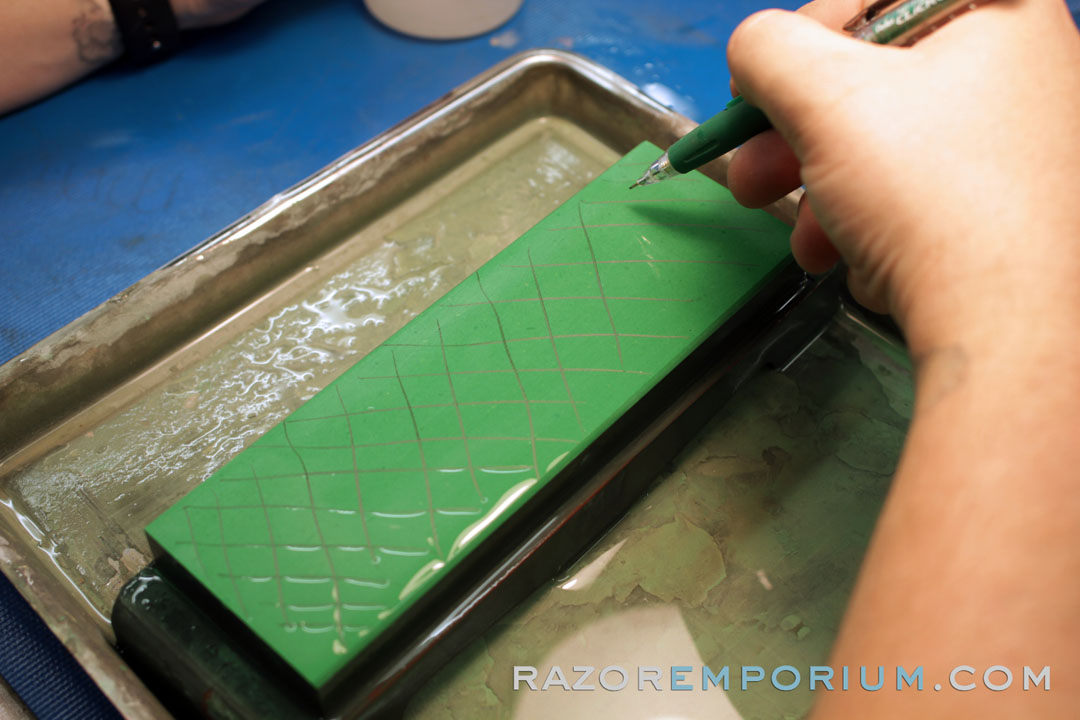How to Hone a Straight Razor: Step 1 Prep
Posted by Marissa Neel on 17th Mar 2017
Eric has been our Bladesmith since 2014, he services every customer straight razor and all of Razor Emporium's straight razor inventory. Since becoming a full-time Bladesmith Eric has constantly improved his honing skills and added several other masterful services to his belt including blade restoration, scale making, and has recently began manufacturing his own straight razors from USA steel. Don't let his beard fool you, Eric straight razor shaves his head daily and his passion for straight razors is unmatched.

Shaving with a straight razor is a dream for many men, and there are a select few who wish to maintain their sharp edges at home as part of the experience. Honing services are difficult to find locally because the art form has been lost as the popularity of straight razors fell over the last 60 years. Sharpening mower blades, kitchen knives, and even a pocket knife is very different from straight razor sharpening and should not be attempted by a novice.

We are very excited to bring his experiences to all of you and hope you will look forward to some advanced straight razor videos! First, let's focus on how to prep your stones for honing. Lapping is simply the process of making your stones perfectly flat. You'll want to do this every time you hone. There's several methods of doing this, here are two...
Tools Featured:
- synthetic wet stone
- Dmt diamond 1.5 micron plate
- mechanical pencil
- water
- natural Japanese wet stone
- 400 grit sandpaper
- tape
- granite or perfectly flat surface
Method One:


- Pencil in hash marks on your stone so you can measure your progress.
- Wet your stone and DMT plate
- Begin lapping. Place your Dmt on the stone or your stone on the sandpaper and apply consistent, even pressure until all the pencil is gone.
- Apply light pressure at first and check frequently. Rinse the stone and plate often to ensure a wet surface.
- After the pencil is gone cut the shoulders at an angle, this will protect your blade and your fingers during honing.

Method Two:
The second method utilizes a perfectly flat surface and sand paper. This method is preferred when the 20k and natural stones. Like your dmt plates you’ll want to adjust the coarseness of your sandpaper to coincide with your grit of stone. This is a very good method of lapping and much more affordable than dmt plates.
- Tape a sheet of sandpaper to a perfectly flat surface
- Pencil in hash marks on the stone
- Wet stone and sandpaper, some natural stones may need soaking
- Lap your stone until the pencil marks are gone
- Angle your stone and file down the edges








